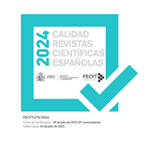La adquisición del español como L3 por estudiantes chinos: las construcciones con gustar
Resumen
El uso del verbo psicológico español gustar presenta una diferencia notable en la interfaz morfosintaxis-semántica en comparación con el de los correspondientes en chino y en inglés. En el presente trabajo se seleccionan estudiantes universitarios chinos de diferentes grados que adquieren el español como L3 y se analiza cómo realizan las traducciones con gustar. Los resultados revelan la influencia tanto de la L1 como de la L2 en todos los ítems analizados, pero a distintos grados. Se descubre que la jerarquía temática y la transferencia de la L1 o la L2 resultan las principales razones para el desarrollo de la representación de la interlengua, mientras que la precisión baja de procesamiento respecto a las informaciones de interfaz, posiblemente, se deba a la capacidad débil de extraer e integrarlas y a la dificultad de la tarea.
Descargas
Descarga artículo
Licencia
La revista Círculo de Lingüística Aplicada a la Comunicación, para fomentar el intercambio global del conocimiento, facilita el acceso sin restricciones a sus contenidos desde el momento de su publicación en la presente edición electrónica, y por eso es una revista de acceso abierto. Los originales publicados en esta revista son propiedad de la Universidad Complutense de Madrid y es obligatorio citar su procedencia en cualquier reproducción total o parcial. Todos los contenidos se distribuyen bajo una licencia de uso y distribución Creative Commons Reconocimiento 4.0 (CC BY 4.0). Esta circunstancia ha de hacerse constar expresamente de esta forma cuando sea necesario. Puede consultar la versión informativa y el texto legal de la licencia.











